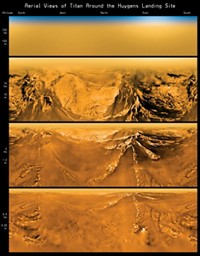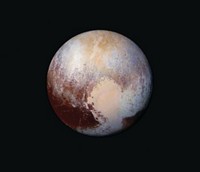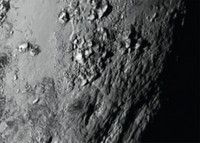Advertisement
Grab your lab coat. Let's get started
Welcome!
Welcome!
Create an account below to get 6 C&EN articles per month, receive newsletters and more - all free.
It seems this is your first time logging in online. Please enter the following information to continue.
As an ACS member you automatically get access to this site. All we need is few more details to create your reading experience.
Not you? Sign in with a different account.
Not you? Sign in with a different account.
ERROR 1
ERROR 1
ERROR 2
ERROR 2
ERROR 2
ERROR 2
ERROR 2
Password and Confirm password must match.
If you have an ACS member number, please enter it here so we can link this account to your membership. (optional)
ERROR 2
ACS values your privacy. By submitting your information, you are gaining access to C&EN and subscribing to our weekly newsletter. We use the information you provide to make your reading experience better, and we will never sell your data to third party members.
Physical Chemistry
Arrival at Saturn
Cassini spacecraft successfully goes into orbit around the ringed planet
by Elizabeth K. Wilson
July 5, 2004
| A version of this story appeared in
Volume 82, Issue 27

Surviving seven years in space and a treacherous passage through the rings of Saturn, the Cassini spacecraft is now in Saturn’s orbit, ready to begin a four-year study of the giant gaseous planet and its moons.
At the end of a white-knuckled interplanetary roller-coaster ride last Wednesday, jubilant mission control scientists at the Jet Propulsion Laboratory (JPL) in Pasadena, Calif., broke into cheers and high-fived and hugged each other as they received all the hoped-for signals from the spacecraft.
Cassini executed the delicate and dangerous “orbit insertion” maneuver without any apparent hitch. Reaching speeds of over 60,000 miles per hour, the craft used Saturn’s gravity to pull itself through a gap in the planet’s rings, over the top of the planet, and back down through the rings again. To brake itself, the craft fired its engine for 95 minutes—“a long, long time,” noted Edward J. Weiler, associate administrator of NASA.
“It feels awfully good to be in orbit around the ‘lord of the rings,’” JPL Director Charles Elachi remarked.

The international Cassini team also used the opportunity to capture the closest ever images of the icy rocks that make up the planet’s rings, and is already marveling at the rings’ density waves, scalloped edges, and wispy areas. Carolyn Porco, imaging team leader at the Space Science Institute in Boulder, Colo., said the photos’ clarity was “so shocking, I thought I was seeing a simulation.”
In the coming months, Cassini’s 12 instruments will begin monitoring Saturn’s atmosphere, magnetic structure, and moons.
The craft faced numerous dangers during the orbit insertion. Though previous surveys showed that the gap in the rings that it sailed through contained nothing more than dust, a particle not much larger could have derailed the mission. “Something the size of a marble could do a lot of damage,” said Robert T. Mitchell, Cassini program manager at JPL.
Engineers turned the craft so that its high-gain antenna, made of a tough graphite epoxy, functioned as a shield against small particles.
The 6-ton spacecraft’s next big task will be to dispatch a probe to Saturn’s giant moon, Titan, on Dec. 25. The probe will plunge through Titan’s nitrogen-and-methane atmosphere to land on the surface.
The $3 billion project is the largest and most complex of its kind in NASA’s history. The Cassini Saturn orbit insertion is the most recent in a number of successes for NASA. Two rovers have been traversing the surface of Mars for months, confirming, among other things, that the planet was once wet. And last month, NASA’s Stardust spacecraft flew close to a comet, gathering samples to return to Earth.





Join the conversation
Contact the reporter
Submit a Letter to the Editor for publication
Engage with us on Twitter